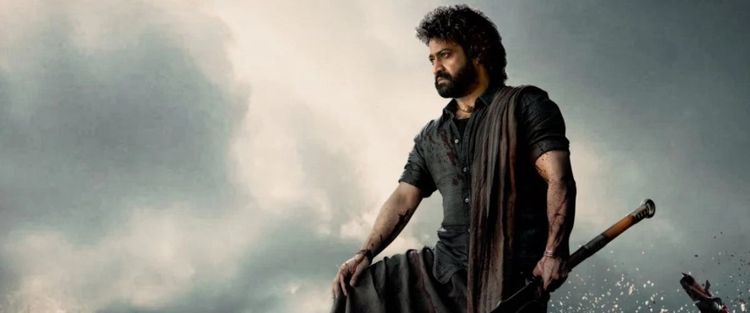Devara Part 1 movie review & film summary (2024) | Roger Ebert

A number of unanswered questions plague “Devara: Part 1,” the fine, but familiar Telugu-language Indian action drama and star vehicle for “RRR” co-lead N.T. Rama Rao Jr. For starters, does this nautical-themed melodrama need to be the first part of a series, and will the heavily foregrounded promise of a sequel leave anyone but NTR’s fans wanting more? It’s hard to know in either case, and not because “Devara: Part 1” doesn’t provide sufficient answers.
First, some good news. Writer/director Kortala Siva (“Acharya”) succeeds at making his ensemble cast, including Saif Ali Khan and Janhvi Kapoor, look great, especially during meme-ready action scenes and dance numbers. The movie’s plot also unfolds at such a deliberate pace that it’s hard to argue that the movie’s either too slow or too predictable to warrant its 176-minute runtime. Which brings me to the bad news.
Too often, the familiar and unchallenging nature of “Devara: Part 1”’s stock tropes and twists hold the movie back from unqualified success. Variations on established themes aren’t necessarily the worst things in the world, but it does get frustrating when you’re watching a giant-sized pirate drama that so regularly swings from perfunctory to rewarding gestures and usually within the same scene.
It’s easy to forget and doesn’t ultimately matter, but most of “Devara: Part 1” is presented as a dramatized cautionary tale for a group of hapless Bombay cops who, in 1996, try to hustle their way into a community of butch seamen. Local storyteller Singappa (Prakash Raj) eulogizes Devara (Rao) and later his son Vara (also Rao), both of whom lead a divided group of villagers near the Ratnagiri mountains. For a while, piracy serves as the community’s main source of income, as we see in an over-inflated but fitfully rousing opening scene where Rao launches out of the water in slow-motion like he’s the second coming of Esther Williams. Eventually, Devara changes his mind about piracy after learning more about the guns he and his crew smuggle for shifty middleman Muruga (Murali Sharma).
Tensions periodically flair between Devara, a selfless leader who can also fight and dance, and Bhaira (Khan), his generically contrary rival. They fight to a standstill during an annual weapons ritual, where four burly men duke it out to decide which of their four villages will control a cache of weapons. Even this establishing brawl takes a spell to catch fire, but it does once Devara and Bhair tie their wrists together and take turns bashing each other into various hard surfaces.
This and a few more conventional pleasures make the first half of “Devara: Part 1” a pleasant enough sit. The plot moseys more than it charges forward, and the movie only arrives at a dramatic precipice before its pre-intermission break. At this point, the drama stops being about Devara and Bhaira’s rivalry and starts concerning Vara, now an adult and the uneasy bearer of his father’s legacy. This back half of the movie occasionally capitalizes on its initial promise, especially whenever the relatively timid Vara tries to fill his dad’s mega-sized shoes. That struggle sets up a rather obvious twist, which then corkscrews into a more novel twist, ultimately laying the groundwork for the implicitly promised sequel. Sure, sure, but why aren’t there more fight scenes in the water? Couldn’t there have been punchier dialogue, and maybe some more dancing and less exposition?
These burning questions threaten to eclipse the most charming parts of “Devara: Part 1,” particularly supporting performances from diligent character actors like Sharma and Srikanth, as well as Kapoor’s scene-stealing turn as Thangam, Vara’s flirtatious love interest. A packed matinee screening in Times Square took a bathroom break during Thangam’s prescribed solo dance number; they missed the movie’s best musical number. My audience did not, however, forget to roar with applause whenever Rao performed a heroic flex or danced along to songs that they’d already committed to memory. Rao’s emotional range still isn’t vast, but he does unleash a devastating charm offensive whenever he fights (with great posture) or dances (with disarming exuberance). A few set pieces also feature a couple of stand-out images and effects, but only a few have enough momentum and flair to sustain their entire length.
So how badly do we need a “Devara: Part 2”? Siva rarely challenges his charming ensemble cast to step outside of their comfort zones, but he and his collaborators still deliver a lot of what you might want from an action-musical about a pack of murderous, but righteous pirates. A sequel could be a thrilling improvement on what this middling tentpole riser sets up. It could also sink beneath the heavy weight of viewers’ otherwise reasonable expectations.

















































